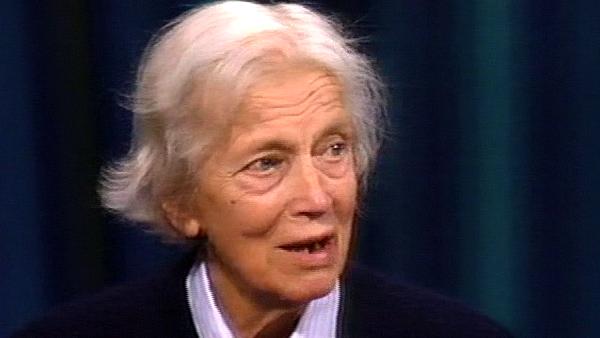NEXT STORY

The upside-down molecular map of insulin
RELATED STORIES

NEXT STORY

The upside-down molecular map of insulin
RELATED STORIES



|
Views | Duration | |
|---|---|---|---|
| 31. Meeting Lester Smith | 213 | 01:20 | |
| 32. Working on vitamin B12 | 1 | 249 | 03:09 |
| 33. Mapping the chemical structure of B12 | 169 | 00:53 | |
| 34. Calculating three-dimensional electron density maps | 104 | 07:36 | |
| 35. Complex chemistry | 94 | 04:43 | |
| 36. The phase problem | 219 | 02:12 | |
| 37. Insulin and heavy atoms | 1 | 109 | 01:46 |
| 38. The Bijvoet effect | 91 | 01:50 | |
| 39. The structure of insulin | 683 | 04:28 | |
| 40. Synthesising insulin | 165 | 03:13 |


The only thing that I had contact with was the synthesis of insulin because three groups set out to synthesise insulin in much the same time and I knew about the Chinese one first of all because when I was lecturing in my first journey to China in 1959, which is the one in which we took the photograph, I was, of course, lecturing entirely about B12, but a group of young Chinese chemists came up afterwards and said, 'Do you think we are being too adventurous, we mean to synthesise insulin?' So I said, 'No, go right ahead', because it was obvious once you knew the sequence that you should be able to synthesise it. And so when the news came through that Katsoyannis had synthesised insulin, I engineered methods of going to Shanghai and seeing how the Chinese synthesis had gone. I got on quite all right with just about... they were more careful Chinese they insisted on doing the activity on their synthetic product, having these crystallise...
[Q] Crystallising it.
Yes, and even showing it under the microscope wet and showed that it changed from wet to dry, things like that. But...
[Q] Now, there was in China I think, Dorothy, some crystallographic work on insulin as well, wasn't it? It came out of the synthetic work?
Yes, well I... when I went to discuss with them their synthesis of insulin I suggested they might use their synthesis to synthesise a heavy atom, and I suggested that it might be iodophenylalanine at the end of the one of the chains so they could try that, but it didn't crystallised - too bad. And we tried it, too, and the... and so did the science school graduates.
[Q] Science school, yeah, they did, yes.
But nobody got crystals that were any use to the x-ray analysis that way, in fact we had to do our x-ray analysis by luck, by soaking in different heavy atoms in a way that had been done with other proteins.
British pioneer of X-ray crystallography, Dorothy Hodgkin (1910-1994), is best known for her ground-breaking discovery of the structures of penicillin, insulin and vitamin B12. At age 18, she started studying chemistry at Somerville College, Oxford, then one of the University of Oxford colleges for women only. She also studied at the University of Cambridge under John Desmond Bernal, where she became aware of the potential of X-ray crystallography to determine the structure of proteins. Together with Sydney Brenner, Jack Dunitz, Leslie Orgel, and Beryl Oughton, she was one of the first people in April 1953 to see the model of the structure of DNA, constructed by Francis Crick and James Watson. She was awarded the 1964 Nobel Prize in Chemistry and is also known for her peace work with organisations such as Science for Peace and the Medical Aid Committee for Vietnam. All recorded material copyright of The Biochemical Society.
Title: Synthesising insulin
Listeners: Guy Dodson
Guy Dodson studied chemistry and physical science at the University of New Zealand, followed by a PhD on the crystallographic study of an alkaloid. In 1961, he came to Oxford to work on the crystal structure of insulin. In the mid 1970s Guy and his wife moved to York University to establish a laboratory. In addition to insulin studies the laboratory has investigated many complex molecules of medical significance, including haemoglobin, myoglobin, HIV related proteins, proteases and proteins involved in managing nucleic acids in cells. In 1993, he went to the NIMR in London to establish a crystallographic group in an environment that spanned molecular, physiological and disease-related disciplines. Here his research began on some cell signalling proteins. His interests on medically relevant proteins included prions, malarial and TB proteins, and some clinically relevant thrombin inhibitors. Guy Dodson retired in 2004 but is still finding much to do in York and the NIMR.
Tags: insulin synthesis, iodophenylalanine, crystals, x-ray analysis
Duration: 3 minutes, 13 seconds
Date story recorded: 1990
Date story went live: 02 June 2008